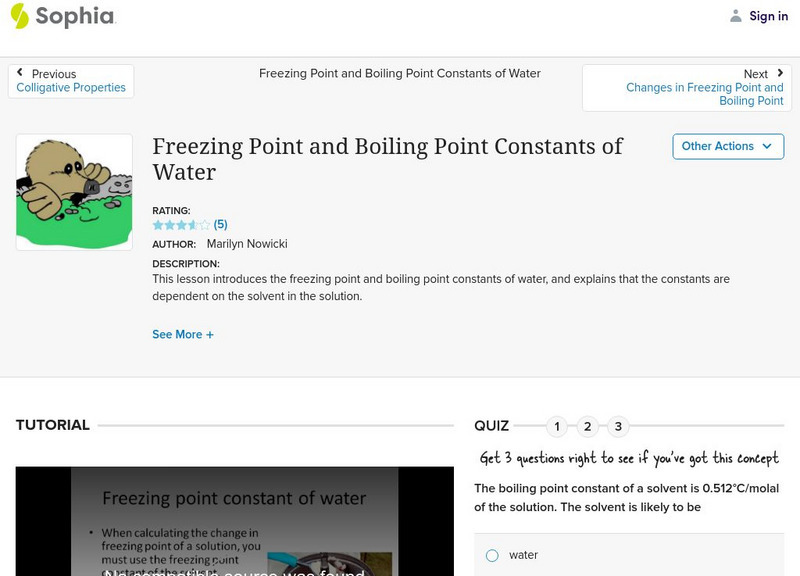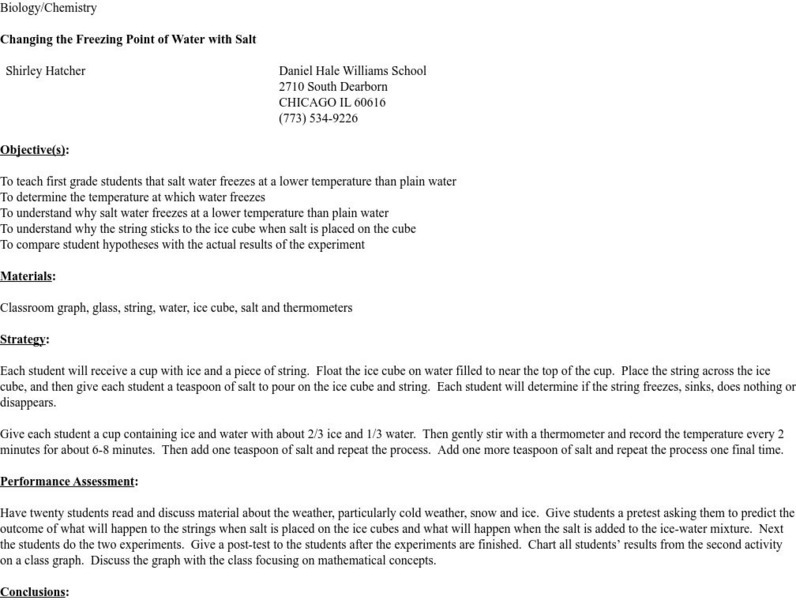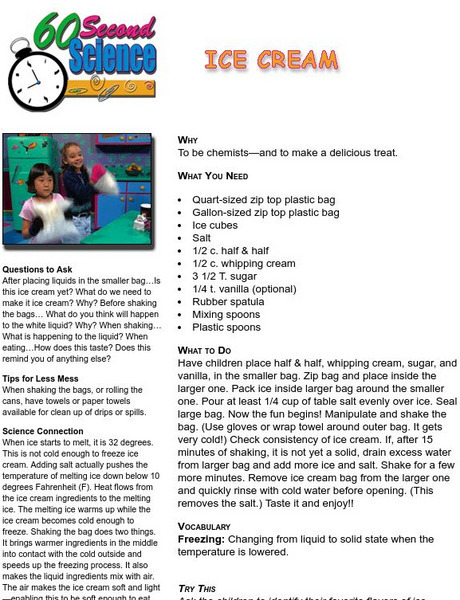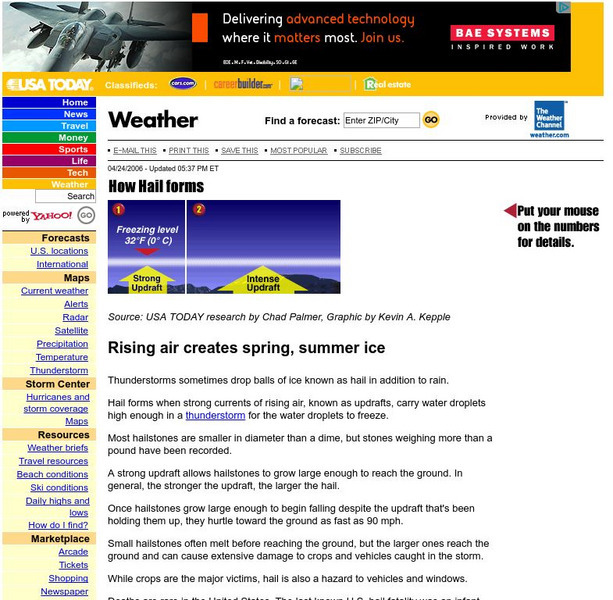Curated OER
The Cool Forms of Water
Students discover the different forms of water on Earth. In this states of water lesson, students read material on the different forms of water and how they are created. The students answer written questions on worksheets.
Curated OER
Make Your Own Thermometer
Young scholars recognize the concept of temperature, including degrees, and the melting and freezing process. In this 1st - 2nd grade lesson plan, students identify the temperature of various objects, as well as create their own paper...
Curated OER
What Do Heating and Cooling Do?
In this changes of matter worksheet, students write in what happens when water is heated and when water gets very cold. This worksheet is a graphic organizer.
Curated OER
What is Physical Change?
In this physical change worksheet, students will brainstorm types of physical change and will write down the cause and effect of each example in this graphic organizer.
Curated OER
Solids in Bottles
Students use funnels to put the five solid materials into clear bottles with caps. They observe how the particulate materials look, sound, and move when they shake and roll the bottle. Finally, students write "sound and touch" poetry.
Curated OER
Frozen Water Before? I'm Sure You Have; But I Bed You've Never Frozen Salt Water! Water!!
Students examine what happens to salt water when it freezes. In groups, they measure density and salt concentrations in different samples of water and record its freezing time. They discuss the relationship between water density and...
Curated OER
Musical Freeze Improvisions
Students are introduced to the process of creating story from movement through improvisation and invention. When the music is playing, they move. When the music stops, the students freeze. A discussion on the role that music plays in the...
Curated OER
Musical Line Movements
Students work on balance by traveling along lines on the floor; and by starting and stopping a variety of locomotor movements with control.
TeachEngineering
Teach Engineering: What Is the Best Insulator: Air, Styrofoam, Foil, or Cotton?
That heat flows from hot to cold is an unfortunate truth of life. People have put a lot of effort into stopping this fact, however all they have been able to do is slow the process. Working in groups of three to four, students will...
BBC
Bbc Schools: Ks2 Bitesize: Science: Materials: Changes in Materials
Help solve the mystery and find the missing crystal. Following the activity, read more about chemical and physical changes, and then take a quick quiz to check for understanding.
McREL International
Mc Rel: Water Cycle [Pdf]
An assessment question requiring knowledge of the water cycle with the opportunity to use application skills.
USA Today
Usa Today: How Winter Storms Bring Rain, Ice and Snow
A great diagram of precipitation and what forms at different degrees. A short description on the formation of rain, snow, and sleet.
Other
Howto smile.org: From Gas to Liquid to Solid
Allow your students to explore states of matter as they learn what causes frost to form on the outside of a cold container. Students will observe how liquid water can change to ice or water vapor in this lab. Lesson includes background...
Sophia Learning
Sophia: Freezing Point and Boiling Point Constants of Water
This video tutorial reviews the freezing point and boiling point constants of water. [1:19]
American Chemical Society
Middle School Chemistry: Changing State Freezing
Discover how freezing works, when the change of state moves from liquid to solid.
Science and Mathematics Initiative for Learning Enhancement (SMILE)
Smile: Changing the Freezing Point of Water With Salt
This lesson plan teaches first grade students basic chemistry and physics principles--that saltwater freezes at a lower temperature that plain water.
Other
60 Second Science: Making Ice Cream
Discover how liquids can change to solids while making ice cream.
USA Today
Usa Today: Rising Air Creates Spring, Summer Ice
This article gives you basic information on hail. There are links at the bottom of the page to how hail forms, how updrafts breed hail and thunderstorms.






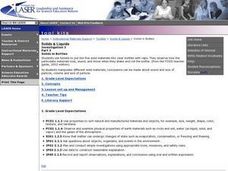





![Mc Rel: Water Cycle [Pdf] Unknown Type Mc Rel: Water Cycle [Pdf] Unknown Type](https://d15y2dacu3jp90.cloudfront.net/images/attachment_defaults/resource/large/FPO-knovation.png)


